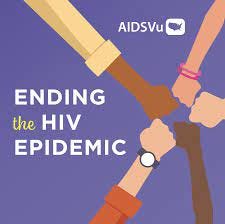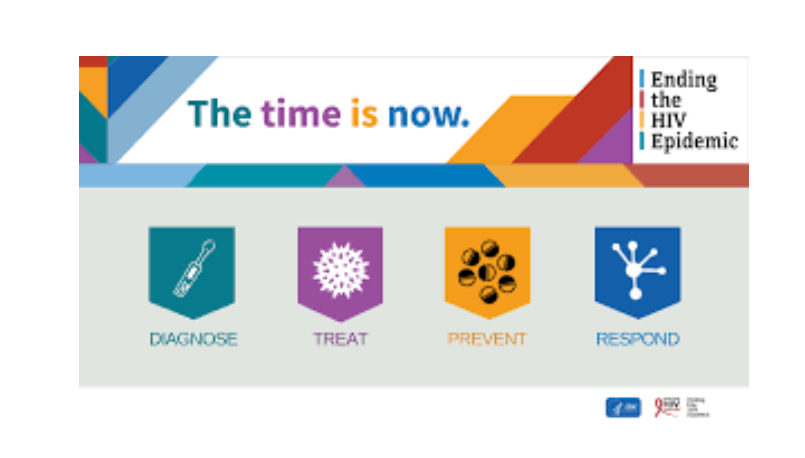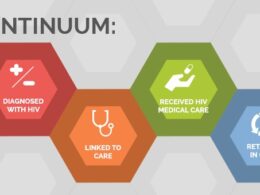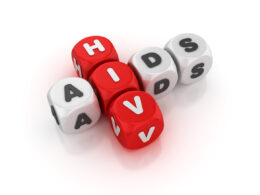This is a republication of the paper “Ending the HIV Epidemic. We Have the Tools, Do We Have the Will?”, with the title above.
Health Transformation Institute (HTI)
research institute & knowledge portal
Joaquim Cardoso MSc*
Founder, and Chief Researcher & Editor
December 1, 2022
MSc* from London Business School
MIT Sloan Masters Program
Senior Advisor for Health Transformation & Digital Health
ORIGINAL PUBLICATION (JAMA Network)

Ending the HIV Epidemic. We Have the Tools, Do We Have the Will?
JAMA Network
Marwan Haddad, MD, MPH1; Anna K. Person, MD2; Hansel E. Tookes, MD, MPH3
December 1, 2022
This World AIDS Day feels different.
Due to remarkable strides during the last 4 decades, the medical community now has the tools to end the HIV epidemic.
Yet barriers persist, such as stigma, discrimination, and racial injustice, which have fueled the HIV epidemic from the outset and continue to stoke an ever-growing hostility aimed at vulnerable, at-risk populations.
Due to remarkable strides during the last 4 decades, the medical community now has the tools to end the HIV epidemic.
Yet barriers persist, such as stigma, discrimination, and racial injustice, which have fueled the HIV epidemic from the outset and continue to stoke an ever-growing hostility aimed at vulnerable, at-risk populations.
To achieve the US Department of Health and Human Services initiative Ending the HIV Epidemic with the 2030 goal of decreasing new HIV infections by 90%, major gaps in the HIV response must be closed.
Success depends on
- reaching the 13% of 1.2 million people with HIV who are unaware of their status,
- helping the 1 in 3 people with HIV who are not receiving treatment or who are not virally suppressed engage in medical care, and
- scaling up treatment for the large proportion of the more than 1 million people who could benefit from but are not taking HIV preexposure prophylaxis (PrEP).1
Furthermore, the US must
- expand syringe services programs;
- provide treatment for mental health and substance use disorders rooted in harm-reduction principles;
- create safe, respectful environments for the lesbian, gay, bisexual, and transgender (LGBT) community; and
- build trust with racial and ethnic minoritized populations.
If these gaps are not addressed, individuals disproportionately affected by HIV will not be reached, …
… including men who have sex with men (MSM) and transgender women, especially those of Black and Hispanic race and ethnicity, along with Black women, people in the South, and rural communities.
To achieve the US Department of Health and Human Services initiative Ending the HIV Epidemic with the 2030 goal of decreasing new HIV infections by 90%, major gaps in the HIV response must be closed.
Success depends on: (1) reaching the 13% of 1.2 million people with HIV who are unaware of their status, (2) helping the 1 in 3 people with HIV who are not receiving treatment or who are not virally suppressed engage in medical care, and (3) scaling up treatment for the large proportion of the more than 1 million people who could benefit from but are not taking HIV preexposure prophylaxis
The 71% of new HIV infections in the US are among MSM, followed by Black cisgender women.1
- HIV prevalence among transgender women is estimated at 42%, driven by high rates among Black and Hispanic transgender women.2
- Black and Hispanic people disproportionately account for 42% and 27% of new HIV diagnoses yet are only 9% and 16% of PrEP users, respectively.1
- People living in the South account for more than half of new infections and yet have disproportionately low rates of PrEP use.
- Many rural communities are decimated by substance use disorder, limited access to treatment, and resultant HIV outbreaks secondary to injection drug use.

Key principles critical to expanding and improving health care services to reach the aforementioned at-risk communities have been outlined 3 and include
- ensuring access to affordable and comprehensive health care for all and
- funding innovative care models, particularly delivering health care “where people are.”
In addition, policies that address social determinants of health associated with structural racism and that fight stigma and discrimination should be adopted, along with repealing and reforming laws and policies …
… that criminalize people with HIV, interfere with patients’ rights to receive medical care, and violate the sanctity of the patient-clinician relationship.

The HIV workforce requires thoughtful consideration.
There is a shortage of HIV clinicians, especially in the South, where a staggering 81% of counties have no HIV-experienced clinicians, with rural counties faring the worst.4
The HIV workforce is also stretched to its limits responding to the COVID-19 pandemic and the monkeypox outbreak.
If the HIV epidemic is to end, the medical community must foster a robust, culturally competent, and diverse HIV workforce capable of responding to HIV as part of a synergistic epidemic that includes interactions between biological, behavioral, and social factors.
Ignoring sexually transmitted infections, drug injection and the opioid crisis, viral hepatitis, COVID-19, and monkeypox will only lead to inadequate responses and persistent disparities.
As an example, 38% of all individuals with monkeypox infections in the US are also people with HIV ,5 with higher rates among Black and Hispanic populations.
There is a shortage of HIV clinicians, especially in the South, where a staggering 81% of counties have no HIV-experienced clinicians, with rural counties faring the worst
If the HIV epidemic is to end, the medical community must foster a robust, culturally competent, and diverse HIV workforce capable of responding to HIV as part of a synergistic epidemic that includes interactions between biological, behavioral, and social factors.
As an example, 38% of all individuals with monkeypox infections in the US are also people with HIV ,5 with higher rates among Black and Hispanic populations.
Yet even an adequate HIV workforce will not succeed in implementing novel programs and interventions (eg, long-acting injectable medication for HIV treatment and prevention and monkeypox vaccinations) without engaging the affected communities in every aspect of decision-making.
This lesson was again seen during the response to the monkeypox outbreak.
The LGBT community changed sexual behaviors and advocated strongly for vaccination, likely contributing to the decline in cases, a salient reminder that the voices of those affected must always be heard.

The crises of drug injection and overdose must also be addressed.
Outbreaks of HIV secondary to drug injection will continue unmitigated if access to syringe services programs, mental health services, and substance use disorder treatment including medication for opioid use disorder is not increased.
Outbreaks of HIV secondary to drug injection will continue unmitigated if access to syringe services programs, mental health services, and substance use disorder treatment including medication for opioid use disorder is not increased.
Drug injection also increases the risk of other infectious diseases, such as viral hepatitis and endocarditis.
Innovative approaches will be required to implement and scale these services, especially in rural areas.
A diverse coalition of clinicians (eg, primary care physicians, infectious disease specialists, pharmacists) who are working collaboratively in a harm-reduction model is essential.
The 2014–2015 HIV and hepatitis C outbreak in Scott County, Indiana,6 should have been an example for other communities to increase access to syringe services programs, substance use disorder treatment, and HIV screening, PrEP, and treatment.
Despite the warnings, additional outbreaks were subsequently identified in Massachusetts, Washington, Kentucky, Ohio, and West Virginia — where evidence-based, lifesaving syringe services programs were shuttered in 2018.
At present, drug injection is the predominant mode of HIV transmission in West Virginia.7
A diverse coalition of clinicians (eg, primary care physicians, infectious disease specialists, pharmacists) who are working collaboratively in a harm-reduction model is essential.
At present, drug injection is the predominant mode of HIV transmission in West Virginia.

Finally, the medical community must stand up against the culture wars that are harming patients and clinicians alike.
The medical community must not be silent while anti-LGBT laws, regulations, and policies are passed that interfere with medical decisions between patients, families, and their medical team.
Those who will be most harmed by this interference are the individuals and communities already experiencing health disparities.

Many southern states have both high HIV incidence and the fewest LGBT protections.
There are restrictions on LGBT-inclusive sexual education and discussion in schools and antitransgender policies and regulations against participation in sports.
Alabama, Arkansas, Arizona, and Florida have enacted laws or policies that would ban or restrict care for transgender individuals, further stigmatizing and impeding one of the communities at the highest risk of HIV infection from engaging in comprehensive primary and LGBT care including HIV prevention services, with many other states inspired to incipient action.
In Alabama, the state ban would make gender-affirming care for transgender youth a felony.
In Texas, Oklahoma, and Tennessee, even in the absence of legislation, officials have been successful in restricting access to care for transgender youth.8
Many colleagues across the US are receiving threats simply because they provide gender-affirming care.
These laws or proposed laws go against national and international medical associations’ recommendations for care of transgender individuals (which facilitates PrEP and HIV treatment), inhibit scientific research, and directly exacerbate the HIV epidemic by adding stigma, isolation, discrimination, and fear to those seeking gender-affirming care, and those providing that care.
Furthermore, in September of this year, a Texas judge ruled that an employer can refuse coverage for PrEP, one of the major cornerstones of the bipartisan Ending the HIV Epidemic, based on religious freedom.9
Such a ruling opens the door to potential denial of care and coverage for PrEP and other treatments.
In 2022, the evidence-based tools and interventions that can end the HIV epidemic are available, but success is incumbent on navigating an environment that has become increasingly hostile and politicized.
This World AIDS Day, what we need to do is clear. We must cultivate a diverse clinical workforce.
We must include affected communities at the table.
We must advocate for policies to ensure that medicine can be practiced without interference.
We must confront stigma and discrimination and focus on health equity at every turn.
If we do this, indeed the HIV epidemic could be ended.
If we do this, indeed the HIV epidemic could be ended.
References and additional information
See the original publication https://jamanetwork.com
About the authors & affiliations
Marwan Haddad, MD, MPH1; Anna K. Person, MD2; Hansel E. Tookes, MD, MPH3
1 Center for Key Populations,
Community Health Center Inc, Middletown, Connecticut
2 Division of Infectious Diseases,
Vanderbilt University Medical Center, Nashville, Tennessee
3 Division of Infectious Diseases, Department of Medicine,
University of Miami Miller School of Medicine, Miami, Florida








